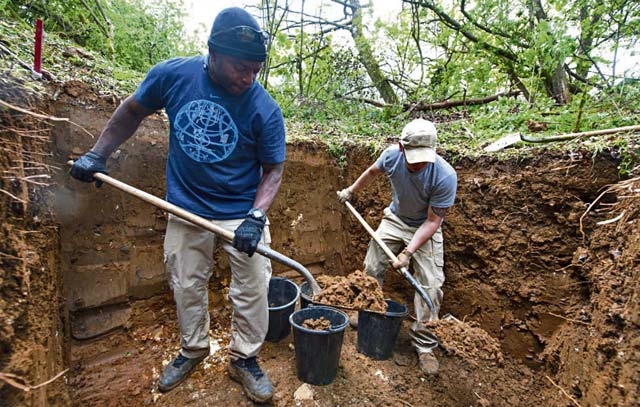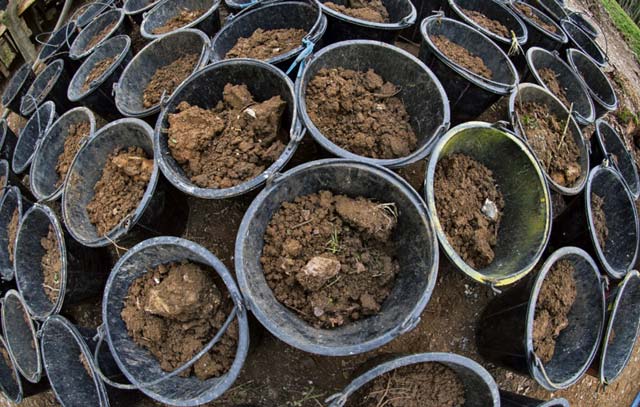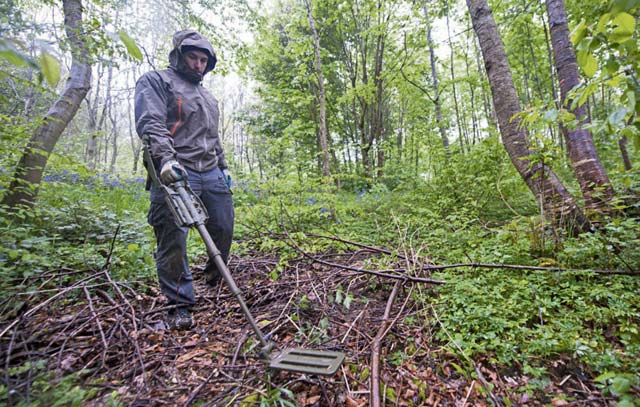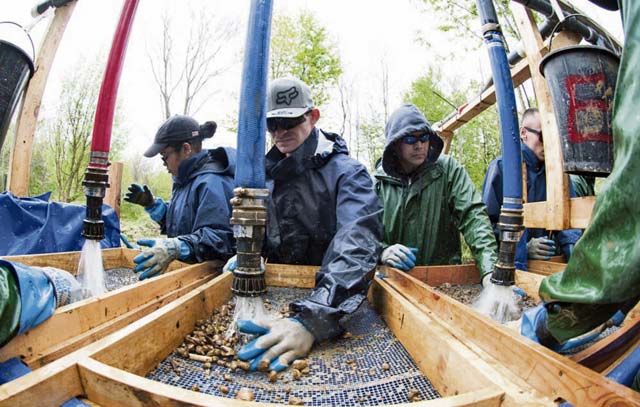
BOULOGNE SUR MER, France – The Defense POW/MIA Accounting Agency continued its search for a missing U.S. Army Air Force P-47D Thunderbolt pilot after discovering pieces of his aircraft in a forest near Boulogne Sur Mer, France, May 9.
Kevin Dalton, a DPAA forensic archeologist with 15 years of field experience, led the DPAA on their quest to find the missing WWII Airman, who crashed after becoming detached from his bomber escort mission in October, 1943.
“We scientifically excavate the site; we control for provenance, which is the location of every item that comes out, and we identify probative material such as dog tags and pieces of bone to take back to our lab for analysis,” Dalton said.
The DPAA team will continue to excavate the area with a variety of archeological tools and meticulously wet screen the soil in search of the missing WWII pilot over the next several weeks. Pieces of aircraft have been found and the location has been correlated by a witness from a nearby village. However, all evidence must be analyzed by the DPAA forensic lab before making a proper identification and notifying the member’s legal next-of-kin.

Each DPAA recovery team requires a specialized forensic anthropologist or archeologist, life support investigator, forensic photographer, explosive ordinance disposal technician, medic, team leader and recovery non-commissioned officers to support a thorough recovery. Each position is provided through DPAA or augmented through U.S. European Command via the different service components within Europe.
“When we come to Europe, we are provided with several military personnel from Germany and Italy,” said U.S. Marine Corps Captain Gene Harb, the DPAA recovery team leader. “These augmentees are very important to our mission and they bring a very diverse set of skills to the team.”
“The best way to get involved with the DPAA mission is to voice your interests to your command as well as do some research on DPAA, which can be found at www.dpaa.mil. We run about fifty to sixty worldwide missions a year and we are always looking for augmentees” said Harb.

Volunteers sometimes fill one of the primary team positions, but can also make up a large portion of the recovery NCOs. Their responsibilities include digging, screening and observing for possible evidence at the recovery sites. Each volunteer is coordinated through EUCOM and requested by the DPAA European Detachment located at Miseau.
“For us at DPAA it is a great honor to serve on these teams,” said Harb. “The American Government made a promise to every service member and their families to bring them home no matter how long it takes. We at DPAA are the operational arm that fulfills that promise.”
Despite being missing for 74 years, a promise was made and the DPAA team may finally bring this WWII pilot home to the United States for a proper military burial.



